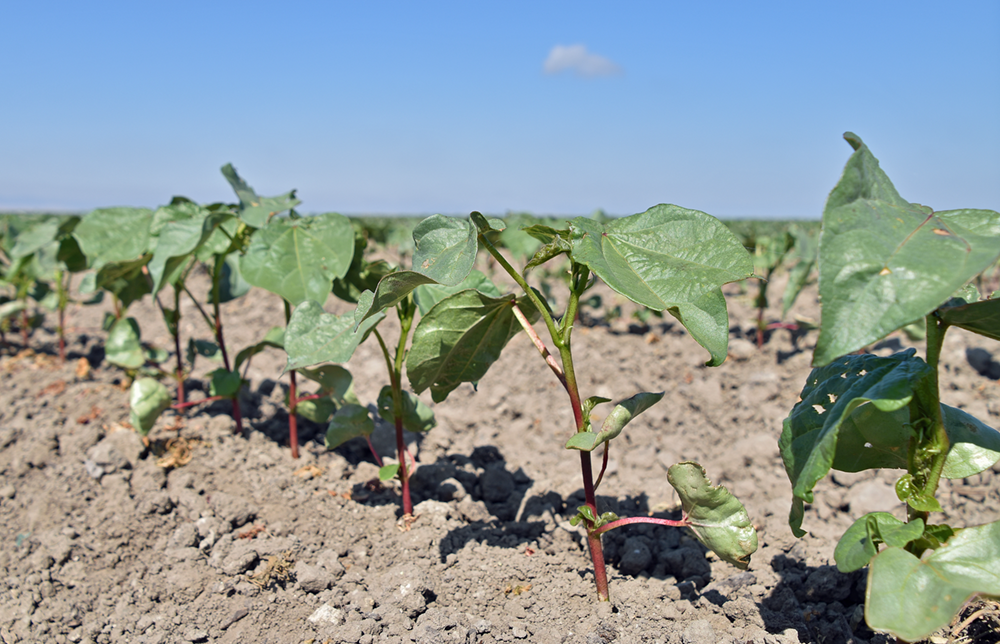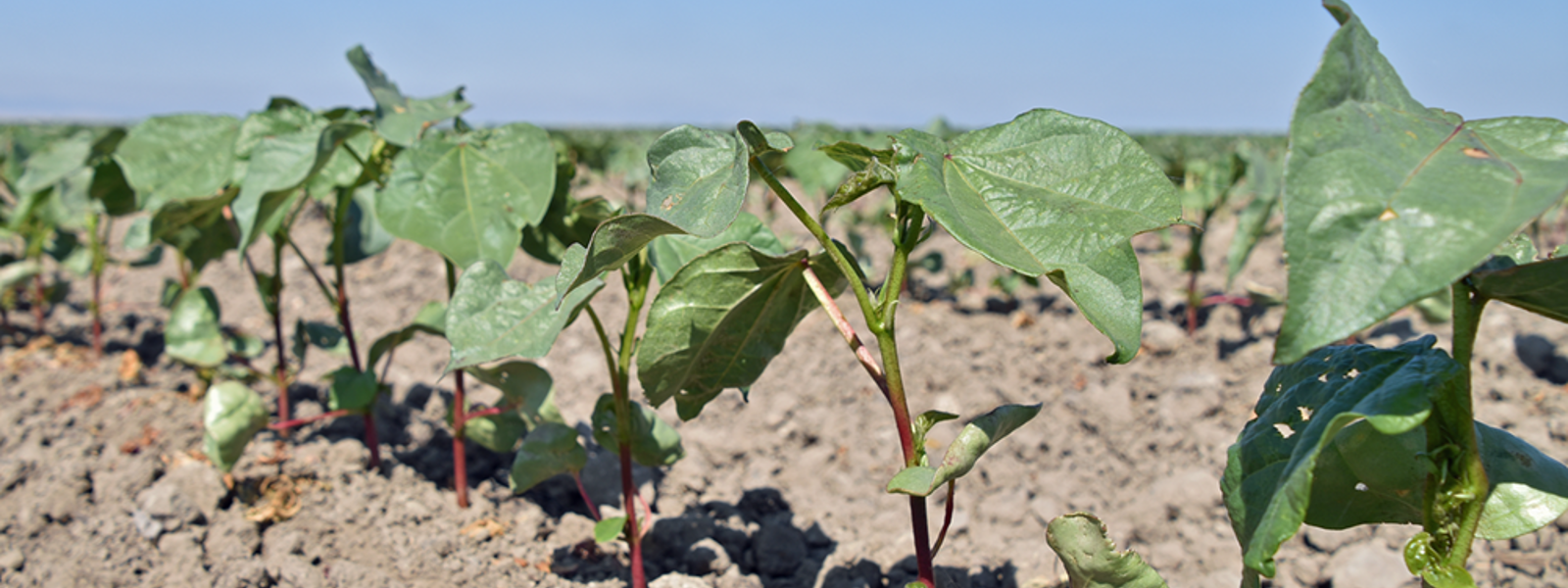Cotton makes a comeback as tomato acreage decreases

Cotton plants grow in a field in Merced County near Los Banos. California’s cotton crop is expected to surge this year as farmers switch to the fiber instead of growing processing tomatoes.
Photo/Vicky Boyd

.png)
Photo/Vicky Boyd
By Vicky Boyd
California’s cotton acreage is expected to make a huge rebound this season, spurred by lower prices for competing crops and receding Tulare Lake levels.
But pima cotton, the premium variety predominantly grown in the state, has its own market challenges and has endured depressed prices for more than two years. With a potentially larger crop this year, the outlook for a market bump isn’t good.
“Pima has been really tough for growers,” said Merced County farmer Aaron Barcellos, who farms diversified crops near Dos Palos.
If growing conditions are ideal this summer, the pima crop could yield roughly 550,000 to 600,000 500-pound bales, adding more supply to an already sluggish market.
“It would be really tough sledding, and we’re all really concerned,” Barcellos said.
In its March 28 prospective plantings report, the U.S. Department of Agriculture National Agricultural Statistics Service forecast 160,000 acres of cotton in California this year, up from 99,000 acres in 2023, the lowest in state history.
Based on an internal member survey, the Fresno-based California Cotton Ginners and Growers Association predicts even more cotton—166,000 acres—will be planted, said association President and CEO Roger Isom. Of that, 135,000 acres will be pima, also known as extra-long-staple, or ELS, varieties. The remainder is upland varieties. Unlike the rest of the U.S. Cotton Belt, most of the state’s upland cotton is grown for seed.
Nationwide, growers are expected to plant about 10.6 million acres of mostly upland varieties this year, up about 4% from 2023, according to the USDA forecast.
Isom pointed to two main reasons for the state’s expected larger cotton acreage this year: In 2023, processing tomato canneries aggressively courted producers with record-high contracts of $138 per ton. This lured many away from cotton and into tomatoes, he said.
But tomato canneries contracted for fewer acres at $112.50 per ton this year, and garlic prices are lower. This made cotton more attractive, Isom said.
In addition, last year’s near-record rains and the reappearance of Tulare Lake flooded thousands of acres of historic cotton ground. Water levels have since receded, opening much of that ground to planting again.
Barcellos said he doubled his cotton acres this year compared to 2023, because of economics and few alternative crop options. In addition, he lost a processing tomato contract.
“I had to find something to do with that ground,” he said.
Merced County farmer Cannon Michael, president of the family-owned diversified Bowles Farming Co. near Los Banos, said his conventional cotton acres are up about 9% this year, while organic acres are up about 150%. He increased organic acreage because land he was transitioning to organic became certified this season.
Michael said water supplies and commodity prices were factors in growers’ decisions to plant cotton this season.
“With tomato prices declining, there aren’t many good options, so growers are picking cheaper crops to grow,” Michael said.
Gary Martin, who farms tree and row crops near Firebaugh, said he increased his cotton acres by about 15% this year, adding he wasn’t able to plant some of his land last year due to flooding.
Because pima requires a longer season to mature than upland varieties, growers try to plant by April 20. This year, Martin finished planting April 27.
“I didn’t have a choice. What else are you going to plant?” he said.
Much of the state’s cotton ground is served by south-of-delta water districts that are part of the federal Central Valley Project, which last month announced a 40% water allocation. This is despite full reservoirs and a slightly above-normal snowpack.
CVP exchange contractors, which have senior water rights, will receive 100% allocations. Martin is in one of those districts and will receive full deliveries.
The CVP announced an initial water allocation of 15% in mid-February as many growers were making planting plans. Without knowing whether that quantity would increase, Michael said many growers chose cotton, which is less expensive to plant and more drought tolerant than tomatoes.
Because of its quality, California ELS cotton has historically earned substantially more per pound than upland varieties. California ELS is running about $2 per pound, which Barcellos said doesn’t even cover production costs.
“Because of the regulations we have, we have higher costs of inputs, higher labor costs. It’s just really challenging,” he said.
Barcellos pointed to reduced demand for home textiles, which include high-end sheets and towels, for some of the market malaise. About 60% to 70% of the state’s ELS cotton goes into these products.
“That market has just gone away with the recession and high interest rates,” he said. “People just aren’t buying high-dollar sheets and towels like they used to.”
While the retail side has been OK, he said buyers are still purchasing hand to mouth.
One of the challenges with pima, Martin said, is growers can’t lock in a price with a futures contract on one of the commodity trading platforms. This leaves them to take whatever price the market will offer at the time they want to sell.
“As far as new crop, we’re a little concerned once all of this increase of acreage gets out there and the effect it will have on the market,” Martin said.
Although growers keep hoping sales and prices will rebound, Barcellos said they haven’t seen it yet. When interest rates were much lower, it was easier to pencil out warehousing processed cotton bales until the market picked up. But he said interest rates topping 7% “really hurt.”
(Vicky Boyd is a reporter in Modesto. She may be contacted at vlboyd@att.net.)




